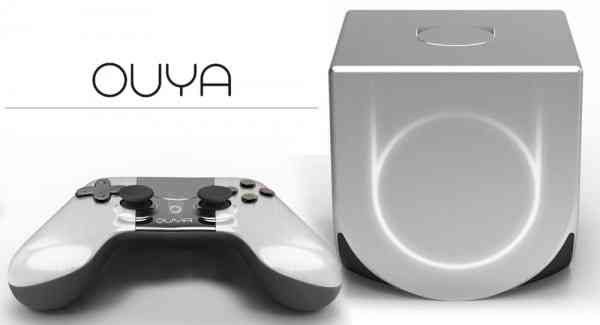With CNET reporting that upstart game console maker Ouya is in talks to be bought-out by Razer, we might finally be near the end of what has been a long, sad chapter in the history of consoles. Ouya, at first a positive and hopeful story of how the “little guy” could break into an industry dominated by huge corporations, has since become another example of hype that just never lived up to expectations.
So what went wrong? Well, things started off well enough. Back in 2012 (which seems so long ago now), Ouya gained a lot of attention as a very promising Kickstarter campaign. Through positive word-of-mouth, and a great concept, the console project was able to attract over 63,000 backers to raise a whopping $8.6 million, which at the time was a record. People were in love with the console at first for a lot of reasons – for one thing, it was designed by acclaimed Swiss designer Yves Behar, and had a gorgeous, minimalist design that appealed to consumers.
Ouya also was going to be cool because it would, unlike the traditional consoles, be open to hacking and modding by its users. Being based on the Android platform, it was going to be a new kind of “open” console. And it seemed like a ton of third-party content providers would support the fledgeling product as well: OnLive, XBMC, Vevo, and even heavyweights like Square Enix, Namco Bandai and Plex officially said they would make software at first.
But the initial euphoria soon died out. Why? Well, the big reason was the fact that the console just wasn’t profitable. It seemed that the very “openness” and laid-back attitude towards monetization that seemed a strength at launch doomed the device. Third-party developers quickly soured, saying that there just weren’t enough players buying games on the Ouya. Statistics seem to bear this out: in the first month of its release, just 27% of Ouya owners actually purchased a game. There just wasn’t the profitability in developing for the Ouya that third-parties hoped.
As a result, the game library for the Ouya just never got to be very good. The only games that did entice gamers to buy the console were older games played via emulators – hardly a major draw and one that the Ouya couldn’t even officially promote, since much of the emulated games were possibly pirated from copyrighted software.
And even the design of the console, at first such a positive aspect, was criticized as time went on, and scrutiny got more intense from actual gamers. The console’s controller, for example, was seen as uncomfortable and oddly-shaped. Its buttons, according to some reviews, got stuck inside the controller or didn’t work. These small issues were not so small, really – they could kill the chances of the Ouya to ever be a serious competitor to the Ps4 or Xbox One.
Now, Ouya is desperately courting a savior to buy the company out. But it seems the console, as a serious competitor to the major game consoles, is effectively dead. Likely, if Razer, or some other company buys it, they will chop the company, or the console, or both, up into parts. The “little company that could” had its day in the sun, but ultimately fell victim to its own hype and unmet expectations. Will we ever see an “indie” console break into the mass market? We can only see, but the failure of the Ouya stands as an example of how not to do it.
